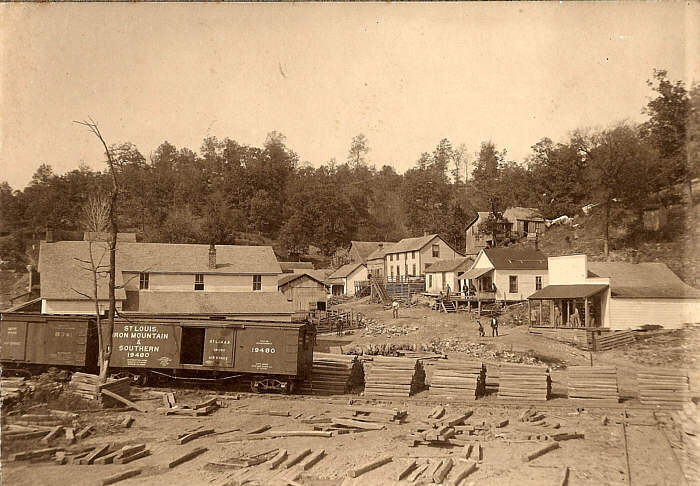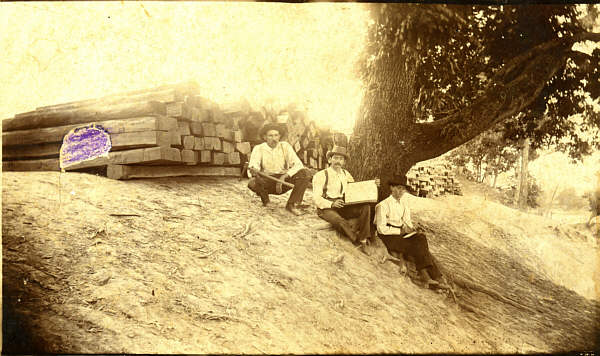

Miller County Tie Hacking
TIE HACKING AND RAFTING ON THE OSAGE RIVER
Told to Peggy Smith Hake by Clarence Barton, age 92, St. Elizabeth, MO.
With the building of the railroads across the face of America, tie-cutting became a 'must' as a new occupation. Millions of trees were felled, cut into 8 foot ties, and laid in the bed of the railroad tracks which eventually stretched from coast to coast and border to border across the United States. Miller County, cut in half by the mighty Osage River, became a huge producer of railroad ties. Old Bagnell, on the Osage, was once called "The Tie Capitol of the World" as millions of logs were rafted past the town. When a spur of the railroad was built from Jefferson City to Bagnell, countless ties were hauled by railroad cars to the Missouri River at Jefferson City.
 Bagnell, the Tie Capitol of the World To be a tie-hacker or a tie-rafter took a definite skill and one which is almost extinct today. There are a few old-timers left who can still pick up a broadax and shape a tie in a short time, but their number has decreased and soon the skill will be gone. Andrew Barton, father of Mr. Clarence Barton, age 92, of St. Elizabeth, was a tie-rafter in Miller County in the 19th century. Andrew Barton, son of Robert and Catherine Barton was born in Miller Co. circa 1863. He grew to manhood in the Osage River country of central Miller County and when still young, went to work on that treacherous river.
 E.P. Hawkins and P.C. Hawkins when in the tie business on the Osage River near Capps. The life of the rafter was a hard and hectic one. The ties would be cut; hauled by wagon to the river; ran down a primitive chute on a river bluff into the water. Once in the river, the ties would be nailed together with sapling poles and a 'raft' would be made several hundred feet long. They would start down the river with their destination being Osage City where the Osage flowed into the Missouri River. Some men in the front of the raft would guide while others at the back would act as brakemen with long, snubbing poles. The river had to be a certain depth or there would be gigantic 'pile-ups'.
Often times it took days just to go a few miles. The rafter who worked the river, built little shanties up and down the river for temporary quarters. Most were constructed of logs and it has not been too many years ago a few of these temporary homes could be seen standing quietly and lonely sheltered under the heavy covering of the forest.
Mr. Barton, with his wonderful memory, sang a song of the tie-rafter's life. He remembers his mother, Amy Barnhart Barton, sitting in her rocking chair and waiting patiently for her husband to return from the river. As she rocked, she would sing...
"Oh the tie-hackers life is a weary life Some say it's so free from care.
But it's hacking on a tie from early morn to night Away from your home so dear."
The words tell the story so beautifully and the melody was handed down through the generations from an old Welch folk song.
|



